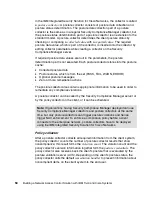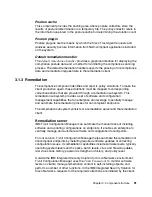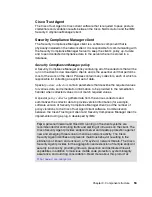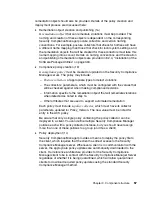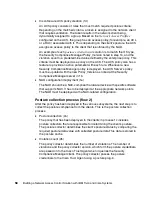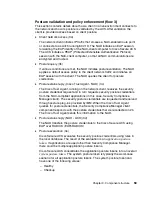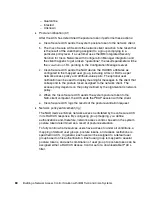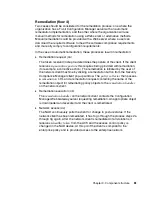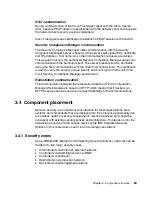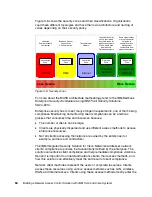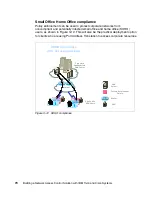
58
Building a Network Access Control Solution with IBM Tivoli and Cisco Systems
Cisco Secure ACS policy creation (1d)
An ACS policy consists of rules that must match required posture criteria.
Depending on the matched criteria, a token is assigned to the network client
that requires validation. The token results in the network client being
dynamically assigned to a group. Based on the
Network Access Profiles
configured on the ACS, the group has an access policy (for example, an ACL
or a RAC) associated with it. Thus depending on the client’s posture, the ACS
assigns an access policy to the client that is enforced by the NAD.
An example of such
posture criteria
in our solution is to match the OS type,
the Security Compliance Manager Policy_Version noted in step 1b, and the
violation count to a predetermined value defined by the enterprise policy. This
criteria must be deployed as a policy on the ACS. The ACS policy also has a
feature to provide an action parameter with each rule. Whenever a new
Security Compliance Manager policy is deployed, the ACS Server’s policy
must be updated with the new Policy_Version as noted at the Security
Compliance Manager server in 1b.
NAD configuration deployment (1e)
The NAD should be a NAC-compliant hardware device with specific software
that supports NAC. It has to be deployed at the appropriate network points.
The NAD must be deployed with a NAC-related configuration.
Posture collection process (flow 2)
After the policy has been deployed in the various subsystems, the next step is to
collect the posture compliance from the clients. This is the posture collection
process:
Posture collection (2a)
The policy that has been deployed to the clients in process 1c includes
posture collectors that are responsible for determining the client’s posture.
The posture collector determines the client’s posture status by comparing the
required posture data value with collected posture data.This data is stored in
the posture cache.
Violation count (2b)
The policy collector determines the number of violations. The number of
violations and the policy collector version, which form the posture credentials,
are passed on to the Cisco Trust Agent when it queries the Security
Compliance Manager client. The policy collector passes the posture
credentials to the Cisco Trust Agent using a posture plug-in.
Summary of Contents for Tivoli and Cisco
Page 2: ......
Page 16: ...xiv Building a Network Access Control Solution with IBM Tivoli and Cisco Systems...
Page 18: ...xvi Building a Network Access Control Solution with IBM Tivoli and Cisco Systems...
Page 20: ...2 Building a Network Access Control Solution with IBM Tivoli and Cisco Systems...
Page 30: ...12 Building a Network Access Control Solution with IBM Tivoli and Cisco Systems...
Page 56: ...38 Building a Network Access Control Solution with IBM Tivoli and Cisco Systems...
Page 94: ...76 Building a Network Access Control Solution with IBM Tivoli and Cisco Systems...
Page 110: ...92 Building a Network Access Control Solution with IBM Tivoli and Cisco Systems...
Page 142: ...124 Building a Network Access Control Solution with IBM Tivoli and Cisco Systems...
Page 225: ...Chapter 6 Compliance subsystem implementation 207 Figure 6 77 Client connection window...
Page 456: ...438 Building a Network Access Control Solution with IBM Tivoli and Cisco Systems...
Page 458: ...440 Building a Network Access Control Solution with IBM Tivoli and Cisco Systems...
Page 504: ...486 Building a Network Access Control Solution with IBM Tivoli and Cisco Systems...
Page 513: ...Building a Network Access Control Solution with IBM Tivoli and Cisco Systems...
Page 514: ......
Page 515: ......







